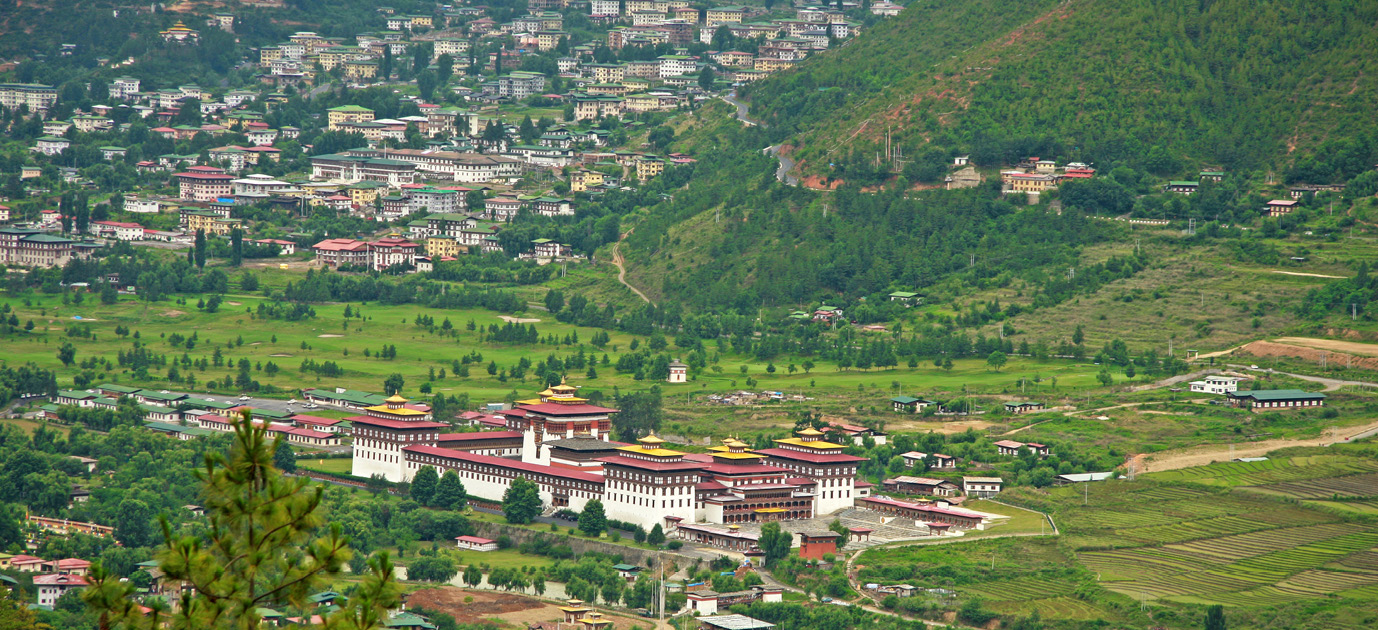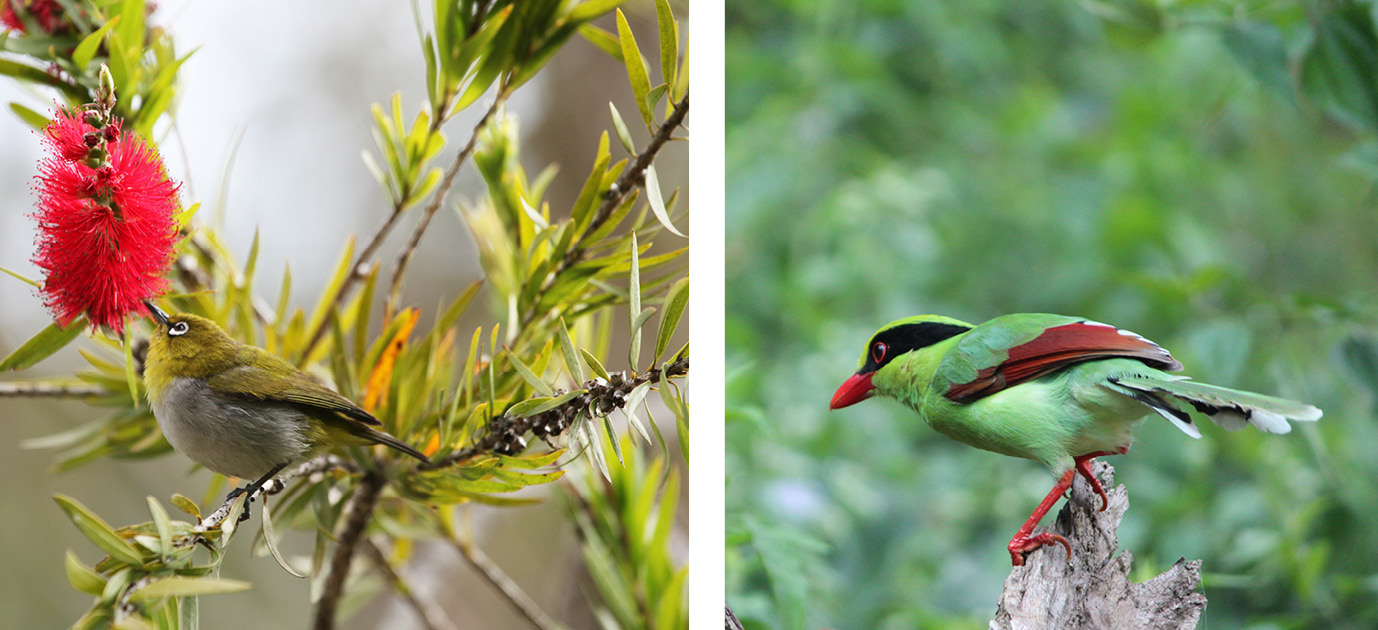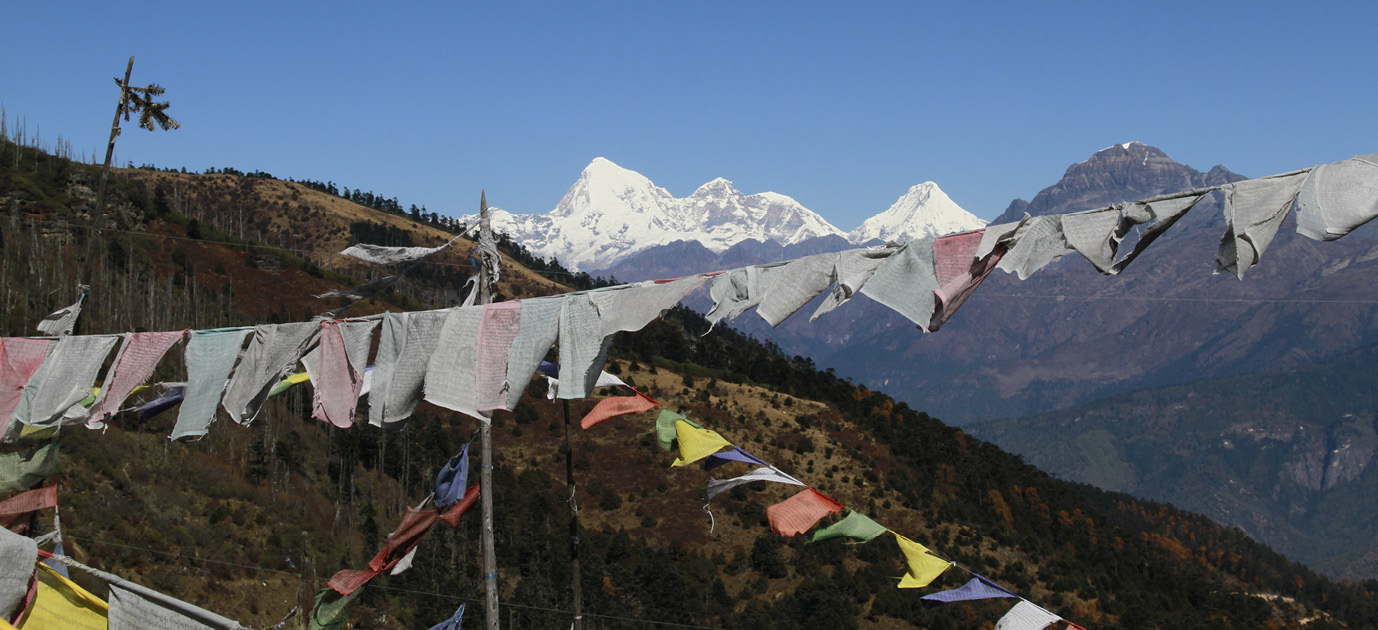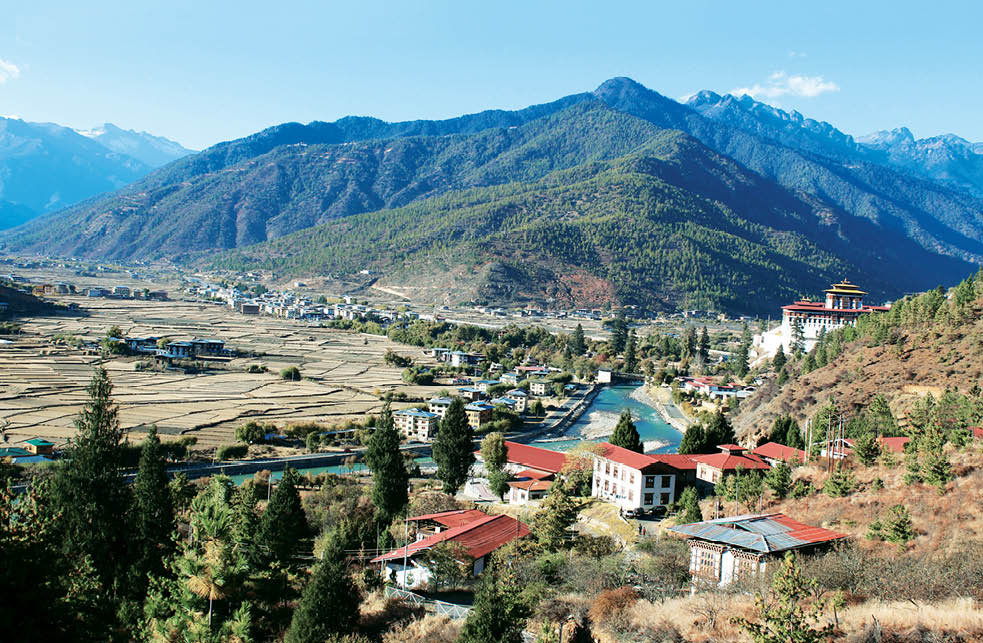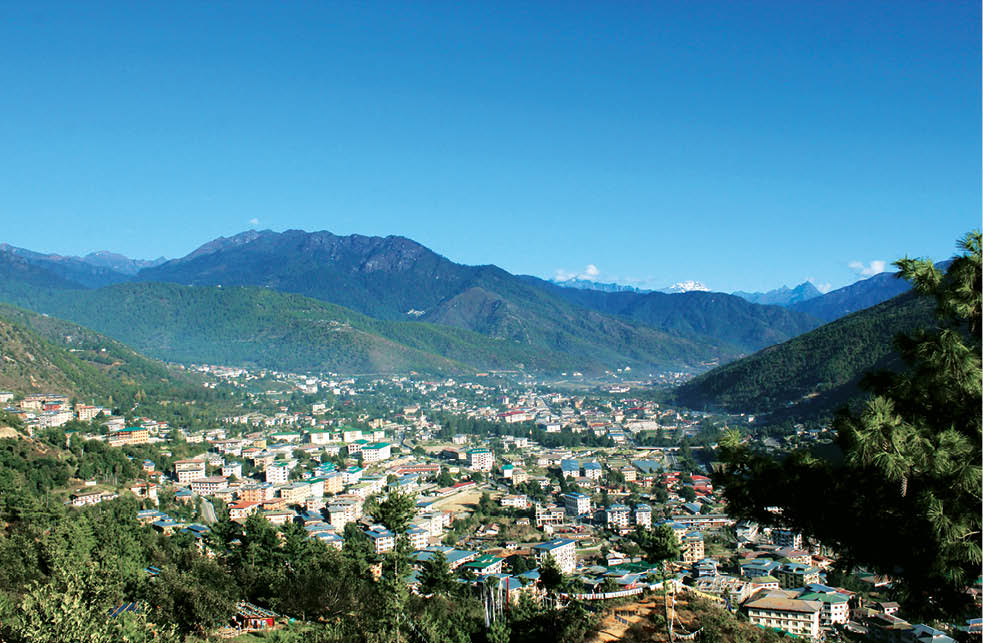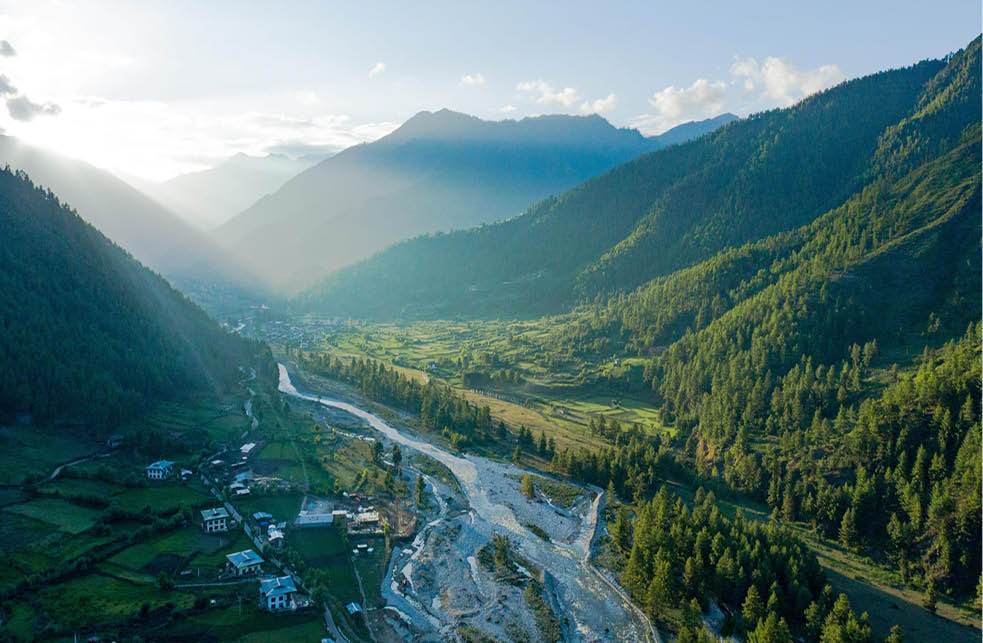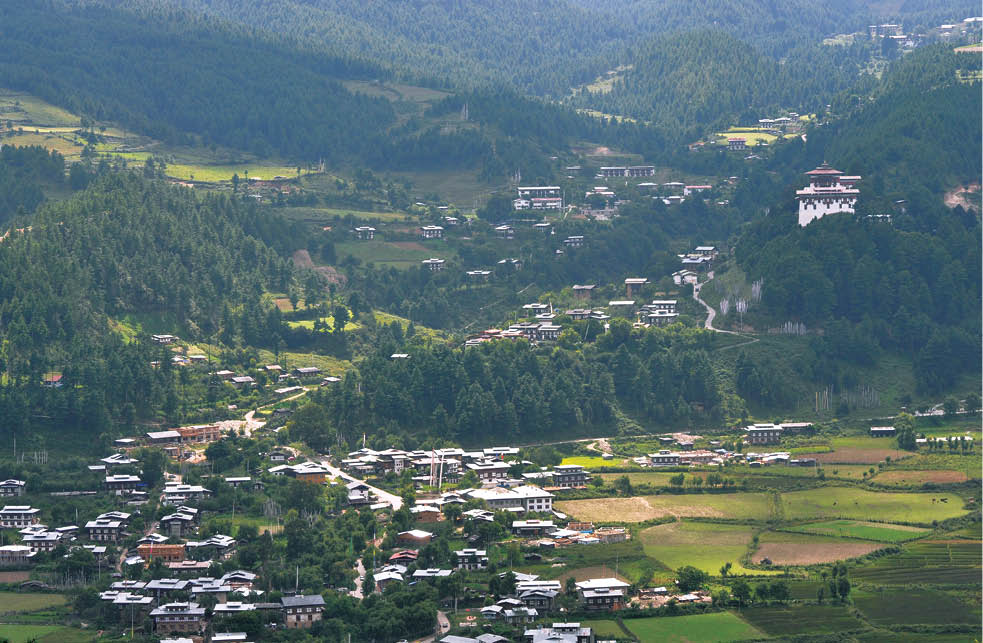


PHOTOGRAPHY TOUR (14 days)
Day 01: Paro to Thimphu
The flight to Paro is one of the most spectacular in entire Himalayas. Whether flying along the Himalayan range from Kathmandu, the journey offers fascinating views and an exciting descent into the Kingdom. Bhutan’s first gift, as you disembark from the aircraft will be cool, clean fresh mountain air. After immigration formalities and baggage collection, you will be met by our representative, and afterwards drive to Thimphu, En route visit Simtokha Dzong, the oldest fortress of the country constructed by Zhabdrung Ngawang Namgyel in 1629. The name Simtokha literally means ‘Atop a Demon’ and the legend associated with the dzong’s construction tells us that it was built in order to subdue an evil spirit that was harassing travelers in the region. Overnight at the hotel in Thimphu.
DAY 02: THIMPHU
After breakfast, drive to Tashichhodzong to attend the Thimphu festival. You will see locals dressed in their finest clothes who have walked from miles around to attend the festivities. They come to watch masked dances, to pray, and to feast. While the underlying purpose of the festival is spiritual, dances are more often like plays, telling stories where good triumphs over evil, or depicting significant historical events, especially surrounding the life of Bhutan’s patron saint, Padmasambhava (also known as Guru Rinpoche). There is inevitably a great deal of socialising as well.
Tashichhodzong, ‘the fortress of the glorious religion’. Initially erected in 1641 by Shabdrung Ngawang Namgyal, it was rebuilt in the 1960s during the reign of Bhutan’s third king in the traditional style, without plans or nails. Tashichhodzong houses some ministries, His Majesty’s secretariat, and the central monk body. Overnight at your hotel in Thimphu.
DAY 03: THIMPHU
Enjoy a morning of sightseeing, including a visit to 12th century Changangkha Temple, the Zilukha Nunnery and the National Memorial Chorten depicting the Buddhist faith in the form of paintings and statues. This temple was first initiated by the Third King as a protection from the negative elements of modernisation, and as a monument to world peace. The Royal Queen Mother completed it as a memorial stupa for the Third King who passed away in 1972.
In the afternoon return to Tashichhodzong to further experience the colourful events of the Thimphu festival. Overnight at your hotel in Thimphu.
DAY 04: THIMPHU – PUNAKHA
Drive over the Dochu-La pass (3,100 meters), which on a clear day offers an incredible view of Himalayan peaks before descending into balmy Punakha valley (about 3 hrs total driving time). The drive through the countryside affords a glimpse of everyday life in this most remote of Himalayan kingdoms. In the Dochu-La area there are vast Rhododendron forests that grow to tree size and bloom in late April/early May covering the mountains in a riot of glorious spring colour.
Punakha was the ancient capital of Bhutan. On arrival, visit Punakha Dzong, the “Palace of Great Happiness” built in 1637 by the Shabdrung, the ‘Unifier of Bhutan’. It is situated at the confluence of the Mo Chu and Pho Chu (Mother and Father Rivers) and is the winter headquarters of the Je Khenpo and hundreds of monks who move en masse from Thimphu to this warmer location. The three story main temple of the Punakha Dzong is a breathtaking example of traditional architecture with four intricately embossed entrance pillars crafted from cypress and decorated in gold and silver. The inside walls are covered with elaborate murals depicting the teaching of the Buddha. It was here in 1907 that Bhutan’s first king was crowned.
DAY 5: PUNAKHA
After breakfast enjoy a short hike through ricefields up to Khamsum Yuelley Namgyal Chorten, built by her majesty the queen Ashi Tshering Yangdon Wangchuk. Perched high on a hill on the bank of the river, the Chorten houses paintings belonging to Nyingmapa Traditions.
Take a picnic lunch on a picturesque riverside before an excursion to visit 15th century Chimi Lhakhang, temple of Drukpa Kuenly who is also known as the Divine Madman. He inherited the Divine Madman title since he revolted against the orthodox Buddhism of his time. He is considered a symbol of fertility and many childless couples go to his temple for blessing. Overnight at your hotel in Punakha/ Wangduephodrang.
DAY 06: PUNAKHA – TRONGSA
Transfer to Trongsa (6 hrs). Drive via the bustling market town of Wangduephodrang. Drive up a winding mountain road through oak and rhododendron forests and over the Pele La pass (3,420m) on the Black Mountain range towards Trongsa. This pass is traditionally considered the boundary between western and central Bhutan. Further down the road stop to visit beautiful Chendebji Chorten. It is built in a style unusual for Bhutan, with painted eyes facing the four directions. The imposing Trongsa Dzong can be viewed across a deep canyon to signal your approach to the town around a curving road.
On arrival, enjoy some relaxation time before visiting Trongsa Dzong, a masterpiece of Bhutanese architecture. Trongsa is the largest Dzong in Bhutan. The foundations of Trongsa Dzong were laid in the 16th Century and there are now 22 temples in the complex. The view from the Dzong is spectacular and one can see across the impressive landscape for many miles. In the old days, it was the vigilance point for both the eastern and western trade routes, thus a strategically important Dzong. Overnight at your hotel in Trongsa.
DAY 07: TRONGSA – BUMTHANG
Following breakfast visit the Ta Dzong museum located on the hill overlooking the Trongsa Dzong. The museums main focus is on the history of the monarchy, and is dedicated to the coronation and centenary celebrations of the Bhutanese monarchy with very rare and precious artefacts on display. These include statues built in the 17th century, to the first King’s Namza (dress), the Raven Crown and Sword of Trongsa Penlop Jigme Namgyal and the 3rd King.
Afterwards, proceed to Bumthang (2.5 hrs), one the most spectacular valleys in Bhutan and also the spiritual and historical heartland of the country. The road winds steeply up to Yo Yutung La Pass (3,400m) before descending down through dense coniferous forest to Chummey valley. From here it is about an hour to Jakar, Bumthang’s main township.
Bumthang is home to some of Bhutan’s oldest Palaces, Buddhist temples and monasteries. The valley’s barley fields, apple groves and meadows lay below huge hills which climb up towards the Himalayan mountain wall separating Bhutan from Tibet. The beautiful architecture unique to Bhutan is evident in the many large farmhouses and temples. Bumthang is associated with Guru Rimpoche (Padmasambhava) and with Terton Pemalingpa.
After lunch, visit Jakar Dzong, also known as ‘Fortress of the White Bird’. It was founded by the great grandfather of Shabdrung. The Dzong was initially built as a Monastery in 1549 but was upgraded after Shabdrung had firmly established his power in 1646. The Dzong is now used as the administration center for Bumthang valley.
DAY 8: BUMTHANG (ATTEND TANGBI MANI)
Transfer to the remote Tangbi Mani village for the day by vehicle and a 45 minute walk. Spend the day viewing the Tangbi Mani Festival in an enchanting rural atmosphere. You will be captivated by the dances and costumed performances accompanied by clapping cymbals, drums, horn and the unforgettable chanting of Buddhist monks. Watch on as the dancers whirl their array of colourful brocades through the air, play local games and stroll handicraft stalls, explore around the village and visit locals at their homes. In the afternoon transfer back to Jakar. Overnight at your hotel in Bumthang.
DAY 9: BUMTHANG
Enjoy a day of sightseeing in Bumthang beginning with Jampey Lhakhang, one of 108 temples built by the Tibetan King Songtsen in the 7th Century. It was here that Guru Rimpoche conducted his first sermon on Tantric Buddhism for his host King Sendha, the local ruler, his family and subjects. Continue on to Kurjey Lhakhang, famous for a rock within one of the temples that features a body imprint of the great master Guru Rimpoche. The big cypress tree in the temple grounds is believed to be the walking stick of Guru Rimpoche.
Afterwards visit Tamshing Lhakhang, the seat of Bumthang’s famous son, saint Pema Lingpa. He built it himself in 1501. A skilled tantric master and artist, he sculpted the main statues and painted the frescoes, some of Bhutan’s oldest which can still be seen even today, mostly in their original state. There is also a chain mail made by Pema Lingpa that devotees carry and circumambulate the inner sanctum to cleanse sins. Overnight at your hotel in Bumthang.
DAY 10: BUMTHANG – GANGTEY (PHOBJIKHA VALLEY)
Start early today for Gangtey, about 6 hrs from Bumthang. Farmhouses and temples dot the landscape and you will see local farmers wearing the traditional woven bamboo hats of central Bhutan. The wide and picturesque Phobjikha valley is one of Bhutan’s few glacial valleys, and chosen winter home of black necked cranes (November – March) migrating from the Tibetan plateau. Visit Gangtey Goempa (Monastery), the only Nyingmapa monastery in western Bhutan. Overnight at your hotel in Phobjikha.
DAY 11: GANGTEY (PHOBJIKHA VALLEY) – THIMPHU
Morning visit to view the Black-Necked Cranes (winter only) before departing for Thimphu (approx 6 hrs). From Gangtey the road gradually descends into the balmy Punakha valley before climbing up over Dochu La Pass and into Thimphu. Remainder of day at leisure. Overnight at your hotel in Thimphu.
DAY 12: THIMPHU – PARO
After breakfast enjoy a morning hike to Tango Monastery (approx. 1 hr walk). Tango Monastery is a higher education institute for Buddhist monks built there in the 15th century by Drukpa Kunley (‘The Divine Madman’). Like many Bhutanese monasteries, Tango was built over a cave where meditation and miracles were said to take place. The monastery has no less than twelve corners and, it is said, was built in only two months – including the six temples within. On a clear day, the views of the surrounding valley and hills is amazing.
In the afternoon continue sightseeing in Thimphu. Visit the School for Arts and Crafts, The National Library housing the collection of Bhutanese scriptures dating back to the 8th century, the Traditional Paper Factory and a fascinating replica of a medieval farmhouse at the Folk Heritage Museum. Afterwards transfer to Paro for overnight.
DAY 13: PARO
After breakfast hike to Taktsang Monastery. The walk of approximately 1.5 to 2 hours uphill takes you almost a kilometre above the Paro valley floor (for those who cannot hike we will arrange a horse for transfer up to cafeteria). The view of Taktsang Monastery built on a sheer cliff face 900 metres above the valley floor is a spectacular sight. The Monastery is also an important pilgrim site for the Buddhists. The great Guru Rimpoche is said to have flown here on the back of a tigress when he brought the teachings of the Buddhist Dharma to Bhutan in the 8th Century. Nearby there is a teahouse where you can stop for refreshments before returning to Paro for lunch.
In the afternoon drive to the almost fully reconstructed Drukgyel Dzong. The original monument (destroyed by fire in 1951) was built by Shabdrung to commemorate his victory against invading Tibetans in 1644. In fine weather the towering peak of the sacred Mount Jomolhari (7314m) appears as a stunning backdrop. On the return drive to Paro, visit other sights in Paro valley. Overnight at your hotel in Paro.
DAY 14: DEPART PARO
Breakfast in the hotel, then drive to the airport for flight to your onward destination.
Tashi Delek!

